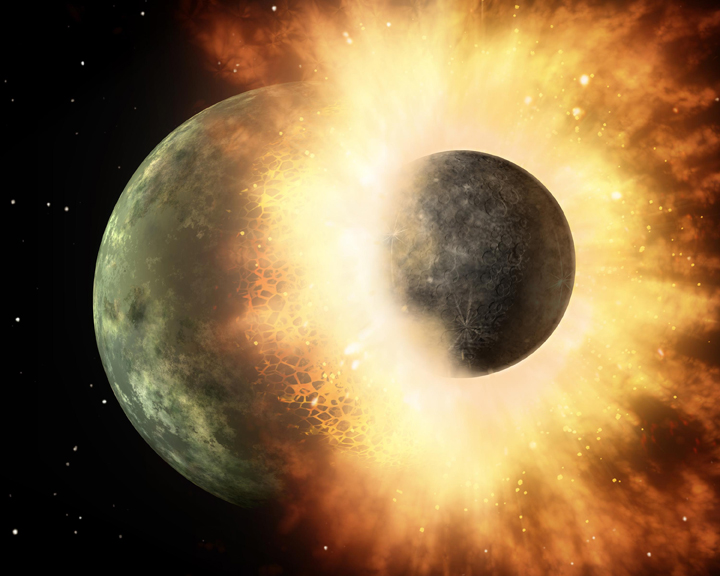Scientists have believed for some time that our moon was formed by a collision between two celestial bodies. What hasn’t been well understood is what kind of collision that was.

Now a new study suggests that, rather than being brushed by another body, something large — called Theia — slammed into our early planet head-on, creating our moon.
Researchers analyzed seven rocks brought back from the moon from the Apollo 12, 15 and 17 missions as well as six volcanic rocks from Earth’s mantle.
It all came down to oxygen atoms. More than 99.9 per cent of Earth’s oxygen is O-16, which has eight protons and eight neutrons (there are smaller amounts of other oxygen isotopes as well). Scientists know that each body in our solar system has its own particular ratio of O-17, which has one extra neutron, and O-18, which has two.
In 2014, German scientists reported that the moon has its own unique ratio of oxygen isotopes that are different from Earth’s. But this new study found that wasn’t the case at all.

Get breaking National news
“We don’t see any difference between the Earth’s and the moon’s oxygen isotopes; they’re indistinguishable,” said Edward Young, lead author and a UCLA professor of geochemistry and cosmochemistry.
So how do they know it was a head-on collision and not a glancing blow?
If this had been a glancing smack of two bodies against each other, the moon would have been mostly Theia, which would mean different oxygen isotopes compared to Earth. A head-on collision, on the other hand, would mean similarly composed oxygen isotopes on both the moon and Earth.
As for Theia, this young forming planet was obliterated. But we see its signature in both Earth and the moon.









Comments